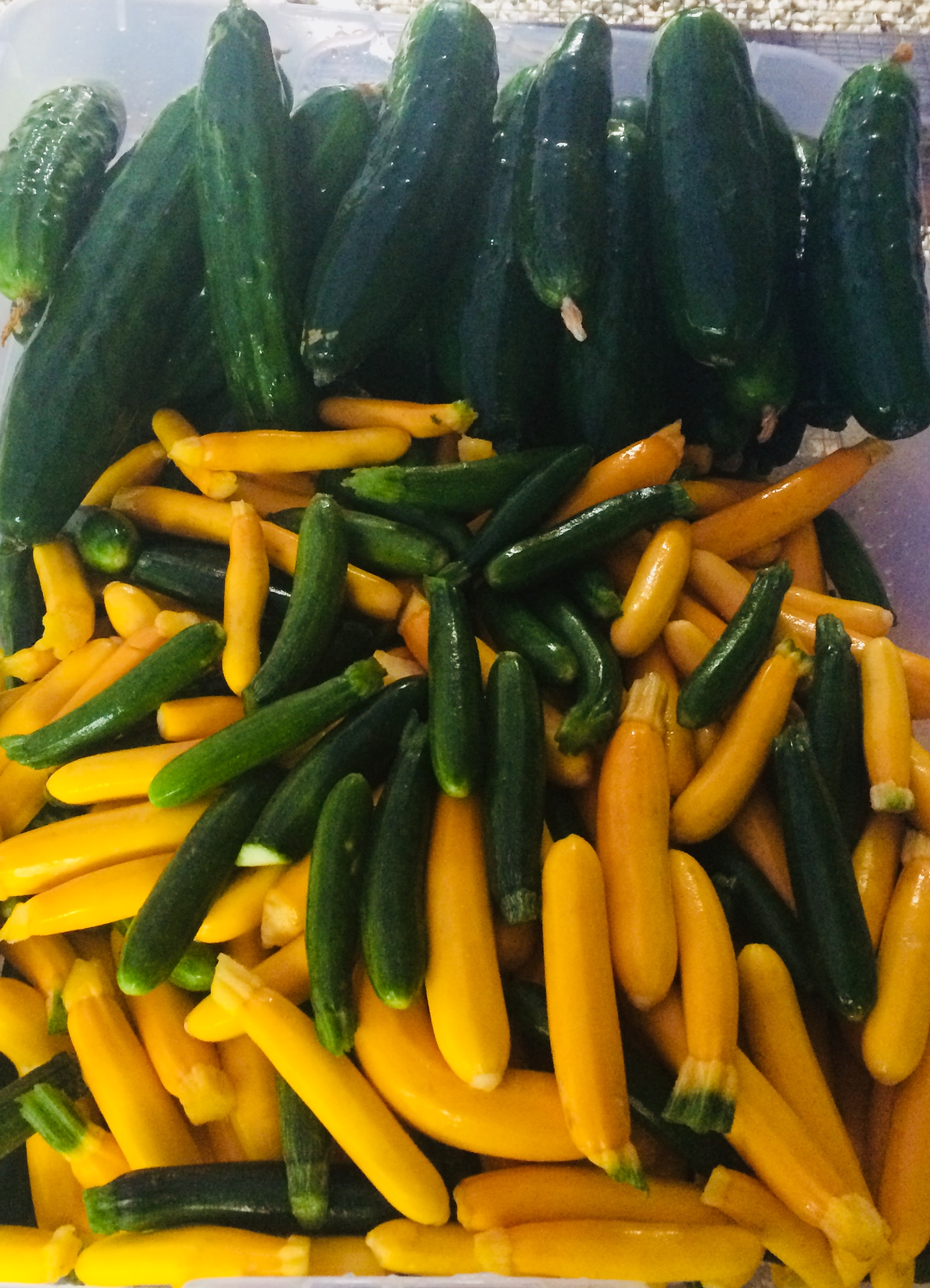C.S.A. Week 3: July 10th/11th
/Kohlrabi, from the German meaning ‘cabbage turnip,’ is one of my favorite vegetables. Of the brassica family, it is related to broccoli, cabbage, kale, collards, and brussels sprouts. The purple, green, or white stems grow an edible bulb with leaves similar to kale. After peeling the skin, kohlrabi can be chopped and eaten raw or cooked any way you like. It is often shaved and mixed as a slaw or cut into chips or fries and served as an appetizer with dip. The texture of the inner flesh is almost a cross between a broccoli stem and an apple or potato. The flavor is typically described as a mild broccoli, but a tad sweeter. The leaves are often substituted for kale, and the bulb can be stored in a Ziploc bag in the crisper of your refrigerator for weeks without spoiling. Kohlrabi is also said to have the highest concentration of vitamin C per calorie than any other vegetable. On top of everything it’s just a cool lookin’ plant that grows really well in our climate of cooler weather during the spring and fall.
In the share:
Kohlrabi
Green Onions
Sugar Snap Peas
Zucchini/Summer Squash
Romaine Lettuce
Bok Choi
Green Onion Cakes
1 1/4 cups boiling water
2 tablespoons vegetable oil
salt and pepper to taste
1 bunch green onions, finely chopped
2 teaspoons vegetable oil, or as needed
3 cups bread flour
Use a fork to mix flour and boiling water in a large bowl. Knead dough into a ball. Cover bowl with plastic wrap; let dough rest for 30 to 60 minutes.
Evenly divide dough into 16 pieces. Roll each piece into a 1/4 inch thick circle. Brush each circle with oil, season with salt and pepper, and sprinkle with about 1 teaspoon of green onions. Roll up, cigar style; coil each pancake and pinch open ends together to form a disc. Roll each circle flat to about 1/4 inch thickness.
Heat 2 teaspoons oil in a large skillet. Fry cakes until golden brown, about 2 minutes on each side. Add more oil between batches, if necessary.
![IMG_5451[1].JPG](https://images.squarespace-cdn.com/content/v1/56d499d28259b57a201ef2af/1604959631417-QG2SU3O3RCG10VZSEYHC/IMG_5451%5B1%5D.JPG)

















